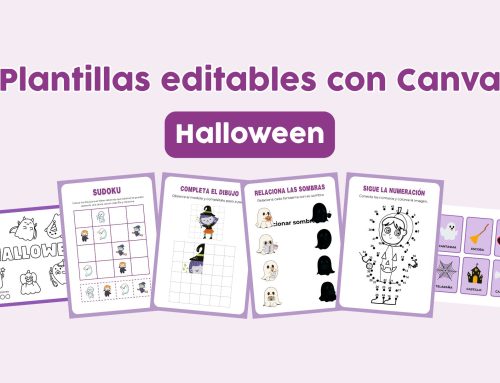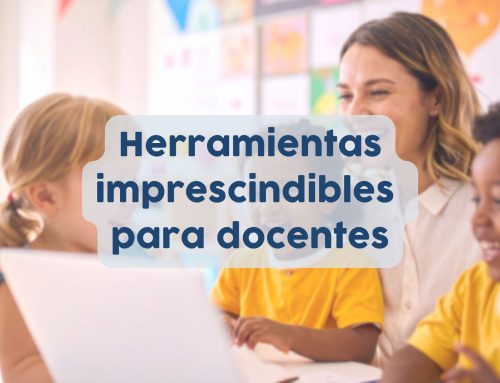Comparto esta magnífica publicación de Héctor Ruiz Martín donde nos presenta 12 ingredientes clave que contribuyen a promover el aprendizaje significativo.
Héctor (@hruizmartin) es director de la International Science Teaching Foundation e investigador en psicología cognitiva de la memoria y el aprendizaje en contextos educativos
En esta publicación comparte 12 principios que nos permiten identificar las acciones y circunstancias que mayores probabilidades tendrán de contribuir a promover el aprendizaje de los estudiantes. Se trata de principios basados en la ciencia sobre cómo aprendemos, pero también en la investigación que analiza los métodos educativos y que estudia las prácticas de los docentes que consiguen los mejores resultados.
A continuación comparto un extracto de su publicación y te dejo aquí el artículo completo.
12 principios de la enseñanza guiada por la evidencia
1. Activar los conocimientos previos.
Nuestro cerebro recuerda mejor aquello que puede relacionar con lo que ya sabemos.
Es necesario que cada estudiante active aquellos conocimientos propios que resulten más relevantes para el aprendizaje en cuestión. Parte del alumnado realiza esto de manera espontánea, pero la mayoría necesita que se promueva expresamente.
2. Promover la elaboración
Si para aprender necesitamos conectar lo que aprendemos con nuestros conocimientos previos, la forma de promover estas conexiones consiste en tratar de dar significado a lo que aprendemos.
Como docentes, debemos incorporar preguntas, discusiones y problemas a resolver por medio de lo aprendido, y dinámicas que solo permitan avanzar por medio del feedback que proporcionen nuestros estudiantes. Los estudios reflejan que las y los docentes que realizan muchas preguntas durante sus lecciones, suelen conseguir que sus estudiantes obtengan mejores resultados.
3. Usar la práctica de la evocación
Gran cantidad de evidencia refleja que lo más efectivo para consolidar un nuevo conocimiento es intentar recuperar la información que tratamos de aprender de nuestra memoria, ya sea para explicarla o para interpretar nuevas situaciones o resolver nuevos problemas.
4. Organizar la práctica de forma espaciada
Para dominar lo que aprendemos necesitamos repasar y practicar, pero no vale hacerlo de cualquier manera. La investigación no deja duda de que resulta mucho más eficaz estudiar en varias sesiones espaciadas que masificar el estudio. Además, para que el aprendizaje perdure, es importante incorporar sesiones de revisiones periódicas, cada vez más espaciadas, a lo largo de todo el curso.
5. Entrelazar la práctica
Una forma de espaciar la práctica consiste en entrelazar el estudio de temas diversos. Para aprender diferentes cosas es mejor irlas combinando que enfocarse en dominar completamente una antes de proceder con la siguiente (siempre y cuando la primera no sea requisito indispensable para aprender la segunda).
6. Proveer múltiples ejemplos
A nuestro cerebro no se le da especialmente bien aprender conceptos abstractos, le resulta mucho más fácil aprender a partir de ejemplos concretos. Sin embargo, nuestro cerebro también tiene la tendencia a asociar lo que aprendemos a los ejemplos y contextos concretos en que lo hemos aprendido, por lo que podemos fallar a la hora de identificar los mismos conceptos o procedimientos en otras situaciones análogas. Por todo ello, es importante proporcionar al alumnado ejemplos distintos, así como actividades para aplicarlos en contextos diversos.
7. Descomponer e integrar
La memoria de trabajo es el espacio mental donde mantenemos y manipulamos la información a la que prestamos atención en cada momento. Es el «lugar» donde razonamos, imaginamos y aprendemos. Sin embargo, la memoria de trabajo tiene una capacidad muy limitada, de forma que solo puede manejar una pequeña cantidad de información en cada momento. Si sobrepasa su capacidad, se desborda e impide el aprendizaje. Esto es la base de la Teoría de la Carga Cognitiva.
Aprendemos de manera más efectiva cuando los componentes del aprendizaje se trabajan temporalmente de manera aislada y se van combinando progresivamente. Incluso una pequeña práctica en uno de los componentes del aprendizaje produce una mejora significativa en el aprendizaje global, aunque es recomendable que esta práctica siempre se realice sin que el estudiante pierda de vista el objetivo de aprendizaje final.
8. Emplear la codificación dual
La memoria de trabajo es un recurso limitado, pero cuenta con mecanismos para procesar información auditiva o verbal por un lado, e información visual, por otro. Podemos sacarle el máximo partido si recibimos la información sobre lo que aprendemos por los dos canales simultáneamente: a través de palabras e imágenes.
La ventaja de combinar palabra e imagen también está relacionada con la posibilidad de crear más conexiones entre la información que recibimos y nuestros conocimientos previos. Además, el cerebro humano está especialmente preparado para procesar y almacenar información visual, por lo que emplear información visual o incluso tratar de visualizar lo aprendido mentalmente, contribuye a que lo recordemos mejor.
9. Limitar los objetivos de aprendizaje y enfocarse en ellos
Otra de las recomendaciones para la enseñanza que se derivan de la Teoría de la Carga Cognitiva, alude a la importancia de restringir el número de metas al máximo.
10. Ofrecer oportunidades para la práctica independiente
Para consolidar el aprendizaje es importante emplear lo aprendido para explicarlo, interpretar nuevas situaciones o resolver nuevos problemas. Además,hay procedimientos que necesitamos automatizar para liberar recursos en la memoria de trabajo cuando los llevamos a cabo.
Los docentes más eficaces ofrecen oportunidades para que los estudiantes practiquen tanto durante la clase como después de ella. Ahora bien, esta práctica debe producirse después de haber ofrecido las indicaciones oportunas, con ejemplos resueltos con la clase entera. Sólo cuando el alumnado haya mostrado comprensión y cierto dominio, puede extenderse fuera del aula.
Por otro lado, la práctica independiente suele verse beneficiada por medio del aprendizaje cooperativo.
11. Emplear la evaluación formativa
La evaluación formativa ocurre a lo largo del proceso de aprendizaje, no solo al final. La evaluación formativa no solo resulta deseable porque permite tomar medidas para ajustar los procesos de enseñanza-aprendizaje en función de cómo progresa cada estudiante, sino porque promueve el tipo de acciones que contribuyen a consolidar el aprendizaje, en especial, la evocación espaciada.
12. Crear un ambiente de aprendizaje exigente pero alentador
El entorno socioemocional que cada docente fomenta tiene claras implicaciones en los resultados de sus estudiantes. La investigación muestra que los docentes más efectivas consiguen crear en sus clases un ambiente de aprendizaje disciplinado, basado en el respeto y la cooperación, con altas expectativas para todo el alumnado, que interpreta el error como un paso necesario en el aprendizaje, y que atribuye tanto los éxitos como los fracasos a cosas que cada estudiante puede cambiar.
Puedes leer el artículo completo de Héctor Ruiz aquí: 12 principios de la enseñanza guiada por la evidencia
¡Únete a mi canal de Telegram para no perderte nada! 😊
Instagram para familias: educación positiva y actividades infantiles 💛
¡Nuevo! Instagram para profesores: recursos educativos y herramientas TIC 👩🏻🏫






